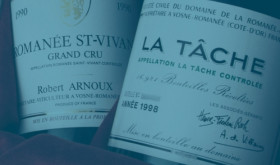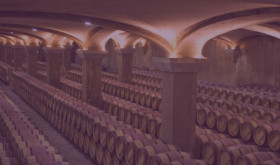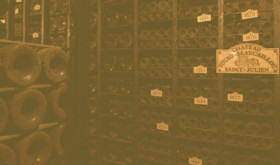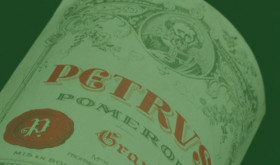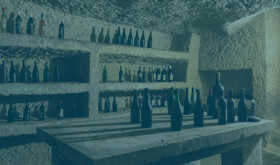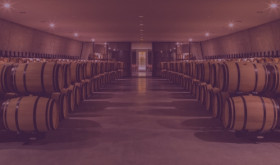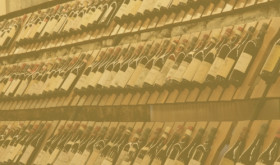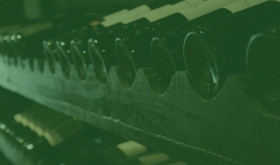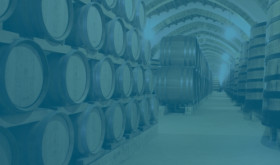
Rocketing inflation is no longer creeping toward us. It’s striding. Currently at 9% in the UK (jumping from 1.5% in April 2021)[1], inflation rates are set to hit a crisis point. And worried investors are understandably looking for solutions to hedge their exposure.
Investing in wine is one of the most effective inflation hedges because of three main reasons:
• The performance of fine wine is uncorrelated to global markets
• Fine wine is a scarce asset, becoming rarer over time
• The growth of fine wine has been exceptionally stable, even more so than gold
In this article, we’ll explain the inflation-shielding qualities of fine wine as an investment.
The performance of fine wine is uncorrelated to global markets
For many investors, the bulk of their assets will be in marketable securities – publicly-traded stocks, bonds, or currencies. Famously, for generations, the rule of thumb has been to invest 60% in stocks and 40% in bonds. But this style of investing has a huge downside, which many are now coming to terms with. Even with diversification, entire asset sectors and classes are still affected by the same market turbulence.
Inflation is one such market shock. Even at a rate of just 3%, the entire value of cash will erode after just 24 years[2].
At the current rate of 9%, outpacing inflation will be an uphill struggle for investments in bonds and currency. The stock markets – although slightly more resilient – will also feel the force of inflation. As businesses grapple to remain competitive with soaring prices, stagnant wages, and less consumer spending, all sectors are likely to be affected in some way.
Fine wine investments, however, do not derive their value from the broader markets. And shocks like inflation have almost no effect on their worth. This is because the price of the fine wine is determined by a niche, insider group of passionate investors. As the supply and demand come from within, fine wine is almost entirely uncorrelated to the global markets. Interestingly, fine wine continues to grow in value despite market turbulence and soaring inflation levels.
Other value drivers for fine wine include qualities that are personal to the bottle. For example, the brand of wine, the quality, and how it has been stored. None of these drivers have any direct link to the wider markets. While all of them give investors a lot more control over the value of their investment.
Fine wine is a scarce asset, becoming rarer over time
There are many ways to define value, but one of the most enduring is the scarcity of an asset. When there is less supply than demand, the value usually goes up. Fine wine is one of the purest examples of this.
Unlike other treasure assets such as gold or precious stones, fine wine naturally depletes over time as people drink it. Some bottles are so rare they are known as Unicorn Wines. One example is the legendary 1945 Domaine de la Romanée-Conti. The wine is famed for its iconic flavours and complexity. But the fact there are so few left in the world drives up the price exponentially. Only 600 were produced and there are almost none left today. In 2018, two such bottles were sold at auction for over $1 million[3], beating all records along the way. This bodes extremely well for long-term investors.
What are the most expensive wines in the world?
There is a clear trend showing how fine wines have increased in value over time. This is great for hedging against inflation. The Liv-ex index is one of the ways investors can track this steady increase. Since it began life in 2004, the fine wine market has grown in value by a staggering 315% (as of the end of 2021). Adjusting for inflation, the real value has grown by 125%. This is compelling growth, especially for those looking to outpace the 9% rates of inflation.
Which wine looks the most promising for 2022?
The growth of fine wine is exceptionally stable, even more so than gold
Wine has been on a steady upward trajectory for some time now. In 2021, the collectible saw record gains and topped the Knight Frank Luxury Investment List. Some performed exceptionally well. Cases of Domaine Bizot, Vosne-Romanée, Aux Jachées, for example, soared by a whooping 414% over the past twelve months[4]. And an incredible 3,004% over five years[5].
By contrast, the worst-performing wine on our books – the Château Croizet-Bages 5eme Cru Classé, Pauillac – fell by just 23% over twelve months. And it’s already increasing in value, again. Over a five-year period, the brand has increased in value by an average of 29%.
Discover the biggest risers and fallers this month
This illustrates the promising risk and return outlook for fine wines. Overwhelmingly, wine as an investment has shown growth.
In recent years, the strong performance of fine wine has even caused economists to question if the asset is more steady than gold. For centuries, gold has been considered an inflation hedge. Demand for this asset – and therefore value – has tended to spike during times of market turbulence. However, the flip side of this is that the precious metal can also tumble when the environment calms. Fine wine, to date, has not suffered this volatile fate. Investors in wine tend occasionally buy more during times of turbulence, as we saw in 2020. But there are no signs of mass sell-offs later. Arguably, this makes fine wine even more stable than rock-solid gold – an impressive feat!
How can you hedge against inflation with fine wine?
Shielding against inflation is just one of the many delicious benefits of investing in fine wine. To name a few, fine wine investors benefit from tax perks, compelling growth potential and improved diversification. What’s more, they also support a much-loved industry, filled with passion. And, with fine wine investments, they can even help to protect the environment.
For the best results, experts recommend allocating a small proportion of your investments into treasure assets like wine.
Getting started is simple and hassle-free. For more information, contact us or explore our tips for investing in fine wine.
[1] Source : Y Charts
[2] Source : CNBC
[3] Source : Bloomberg
[4] Source : WineCap
[5] Source : WineCap
[6] Source : Credit Suisse
